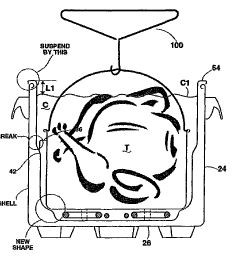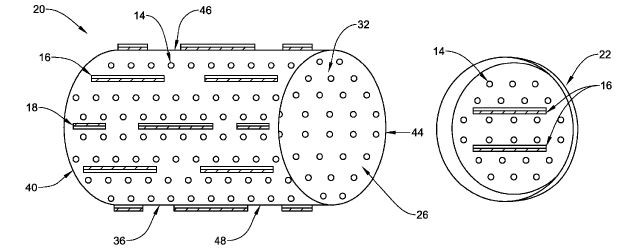It’s Thanksgiving and making turkey is a must for most. Personally I don’t like to eat turkey, but do enjoy the holiday gatherings with friends and family. I don’t envy those who have to make the turkey. This year, I asked myself how would I make the turkey IF I had to make it. As a patent attorney, I decided to investigate the different methods by conducting patent searches.
Step 1: Search for relevant patents
I started my research at the USPTO database and Google Patent with a key word search for anything to do with “turkey.”1 I kept the search broad because, who knows, the best turkey may involve having to raise my own turkey with the proper feed, how to season it, how to cook it, and how to carve it.
First, I will need to raise my own turkey with the proper feed. China Patent No. CN 101861926 for “Turkey Feed” for Nicolas turkey (i.e. turkey with white skin) discloses a feed that is a combination of soy flour, oat flour, rapeseed cake flour, sweet corn protein powder, fish meal, shrimp powder, red worms flour, rice leaf powder, grass seed powder, etc. As the inventor asserts, this special turkey feed would raise a substantially healthy and high quality turkey. It can take 18 weeks for an 18-pound turkey, so I will have to plan ahead for next year.
Once I raise my turkey, I will need to decide how to season it. U.S. Patent Application Publication No. 20070154597 for “Food Product with Enhanced Flavor and Moistness and Method of Making the Same” sounds perfect for a moist turkey. This patent application teaches “mixing a salt [about 90%] and at least one seasoning [about 10%] to form a dry moisture retaining composition,” “applying said dry moisture retaining composition to the food product [i.e. turkey]”; and “roasting the food product for a predetermined time period [between 13 -25 minutes per pound].” Sounds like a lot of salt to me!
Now, onto the actual cooking. U.S. Patent No. 7981459 for “Cooking Apparatus” provides a method of frying the turkey, which includes the following steps:
- inserting a whole turkey … into a cooking pot;
- heating fluid in said cooking pot indoors with an electric heater unit in contact with the fluid in the cooking pot …;
- placing a lid over said cooking pot following turkey insertion, and
- holding the turkey with a food holder and supporting the food holder with a food holder support that is positioned under the food holder …; and
- frying, with the heating fluid, the submersed turkey while in the cooking pot….
Here is a drawing of the setup for this method:

While I may not like to eat turkey, I do love to eat stuffing, but you can’t exactly stuff a fried turkey. However, I found the perfect solution in U.S. Patent No. 8741374 for “Device and Method to Simulate Cooking Stuffing in a Bird,” which teaches the following steps:
- placing a quantity of stuffing into an opening of an interior space of an internal tube …;
- sealing the interior space of the internal tube with at least one interior cap, said at least one internal cap having a plurality of holes therein and a plurality of support braces thereon …;
- placing one or more pieces of poultry between the support braces located on the upper end of the internal tube;
- placing the internal tube into an opening of an interior space of an external tube …;
- adding a liquid and, food ingredients into the interior space of the external tube;
- sealing the interior space of the external tube with an external cap which fits over the opening of the external tube; and
- cooking the stuffing at a certain temperature for a certain period of time ….
Here is what the internal tube looks like:

Almost ready to eat that turkey. U.S. Patent No. 6572467 for “Process for De-Boning a Turkey” provides the step by step guide to carve it:
- making an incision along a leg bone … and severing the leg joint …;
- removing two segments of a wing …; exposing a wing joint … and severing the wing joint …;
- making an incision along the back of the fowl, and separating the flesh of the back from the backbone and ribcage;
- severing a joint between the thighbone and the rest of the fowl;
- making an incision along a shoulderbone …;
- removing a ribcage from the rest of the fowl;
- separating flesh from a breastbone and removing the breastbone;
- removing a wishbone;
- making an incision along a thighbone, exposing a thigh joint …, severing the thigh joint ….
Step 2: Determine the Status of the Patent or Patent Application
Now that I have gathered all the relevant patents and patent applications, I want to ensure I can use the methods without concern of patent infringement. Since a patent is territorial, the Chinese patent on turkey feed cannot be enforced in the U.S.2 If a patent expires3, fails to pay a maintenance fee4, or if a patent application is abandoned and never issued, the subject matter of the invention disclosed therein is in the public domain. The status of maintenance fee payments can be checked at the USPTO’s “Patent Maintenance Fees” page. The status of a patent application that has been published5 can be checked at the USPTO’s “Public Patent Application Information Retrieval” page.
The U.S. patent application on seasoning the turkey was abandoned (Publication No. 20070154597). However, all the U.S. patents that I located above are all live and effective. Therefore, it would be patent infringement if I use the patented methods.
Step 3: Determine the Scope of the Patent
I still like the methods of cooking the turkey and stuffing and carving the turkey as disclosed in the U.S. patents set forth above. I will have to carefully review and analyze the prior art and prosecution history to determine the scope of the patent claims, which I will not go into detail here.
Step 4: How to Avoid Infringement
Once the scope of the patent is determined and what would be considered infringement6, we can come up with alternate methods. In order to infringe a method claim, each step of the method must be performed7. Therefore, skipping a step can potentially avoid infringement. But merely asking a friend to perform some of the steps would not avoid infringement7.
Conclusion
In the end, after all these investigations, I conclude that it is just not worth all the above effort and risk of patent infringement to make the turkey. So I found an abandoned U.S. Patent Application Publication No. 20050257694 for “Method and Apparatus for Preparing a Roast Turkey Analog from Vegetarian Ingredients,” i.e. a vegan turkey!
I hope the above provides a simplistic view of patent clearance to minimize patent infringement risk. Happy Thanksgiving and enjoy your turkey!
End Notes:
1 A better searching strategy would be to search by the USPTO classification system because a turkey can be classified as a poultry, a bird, etc. and a keyword search for “turkey” would not come up with all relevant results.
2 However, there may be a corresponding U.S. patent, which should be further investigated.
3 A patent expires 20 years after the earliest filing date, subject to any terminal disclaimer, patent term adjustment and/or maintenance fee payment.
4 Maintenance fees are due at 3.5 years, 7.5 years and 11.5 years after a patent issues. Even if a maintenance fee is not timely paid, a petition can be filed for late payment of the maintenance fee.
5 A patent application is typically published at 18 months after filing, unless the applicant filed a Non-Publication Request.
6 Under both literal infringement and infringement under the Doctrine of Equivalents.
7 Medgraph, Inc. v. Medtronic, Inc., 843 F.3d 942 (Fed. Cir. 2016).